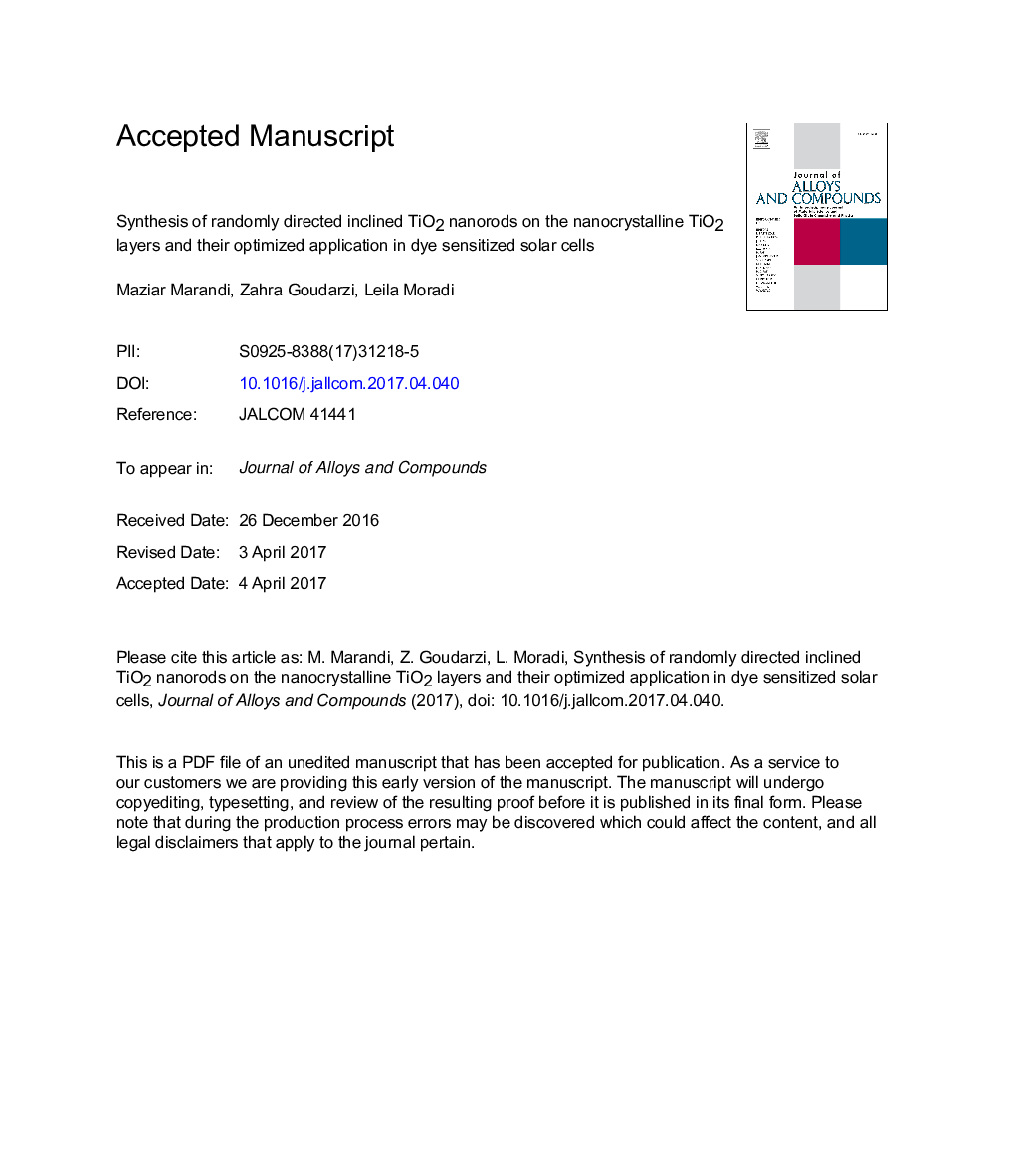| Article ID | Journal | Published Year | Pages | File Type |
|---|---|---|---|---|
| 5459298 | Journal of Alloys and Compounds | 2017 | 29 Pages |
Abstract
In this research TiO2 nanocrystals of 20 nm size were synthesized through a hydrothermal method. These nanocrystals were deposited on FTO glass substrates with 6 μm thickness. A layer of TiO2 nanorods were over-grown on this nanocrystalline sub-layer by another hydrothermal process. The inclined TiO2 nanorods were well-formed and randomly directed on the top of the TiO2 nanocrystals layer. The length and diameter of the nanorods and corresponding thickness of this over-layer was controlled by the growth time. This bi-layer structure was applied as the photoanode of the dye sensitized solar cells (DSCs). The nanocrystalline TiO2 sub-layer could create enough dye adsorption and acceptable sensitization. Besides, the nanorods over-layer could increase the light scattering and light travelling distance within the photoanode. These two parameters resulted in an increased light absorption and energy conversion efficiency. A maximum efficiency of 6.2% was achieved for the optimized cell with bi-layer photoanode with over-grown nanorods in 20 h. This efficiency was increased about 47% compared to that of the DSC with just nanocrystalline photoelectrode. Final improvements were carried out on the thickness of nanocrystalline TiO2 sub-layer and its post-treatment before the nanorods growth. The energy conversion efficiency was increased to 7.5% due to the application of these modifications.
Related Topics
Physical Sciences and Engineering
Materials Science
Metals and Alloys
Authors
Maziar Marandi, Zahra Goudarzi, Leila Moradi,
